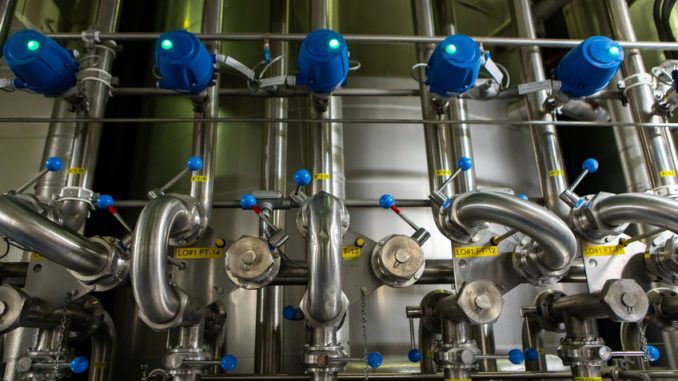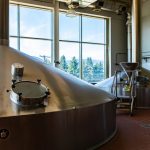
Introduction
A Bright Tank or Brite tank as it’s sometimes called is a dish-bottomed tank which can hold a carbonation pressure and is usually temperature controlled. It is used to hold beer in preparation for packaging and also to produce a more carbonated beer.
The term “bright” refers to “bright beer,” beer that has been rendered bright i.e. clear by filtration, centrifugation, fining, and/or maturation.
In the process of brewing, beer is often conditioned in tanks where it is kept just above freezing. This is usually an aging tank. Here, excess yeasts, tannins and proteins which form hazes will settle to the bottom with time. The beer is allowed to mature and the flavour to develop.
Once the brewer is satisfied with this brew, the beer is filtered using a plate and frame filter. These are pads with a filtering aid added to the beer to remove yeast and bacteria from the beer.
The beer which is now clear of particulates is passed to the bright tank which serves as a holding tank. It is pressure rated because beer at this point will often be carbonated. This is the addition of carbon dioxide gas either through an in-line system or by sparging carbon dioxide when the beer is in the bright tank. Carbon dioxide can also be added by creating a head pressure which allows the gas to diffuse into the beer.
The process of adding carbon dioxide to beer to increase its level of carbonation is also known as force carbonation. The best carbonation levels are achieved by keeping this beer near to freezing when solubility of carbon dioxide is at its highest, hence the value of jacketed stainless steel vessels.
Carbonating the beer in the bright tank is also a way of keeping it fresh ready for packaging. The overpressure of gas helps drive beer to the filling vessel where it can then be successfully delivered into bottles, cans, kegs etc. It can also be used as a serving tank in its own right.
Adjusting the level of carbonation is a consideration in packaging when using kegs versus cans and bottles. Higher gas pressures are used for kegging and barrels whilst a lower pressure might be required for canning. I prefer a carbonation value in beer of 2.8 vols. of carbon dioxide for barrels and kegs whilst a can will be best with a carbonation level of 2.1 vols. CO2.
Beer sampling from a bright tank is conducted via a zwickel which is a sanitary sampling valve.
The bright tank is also a particularly sensitive part in the hygienic operation of a brewery. Knowing how much beer is available for packaging is very important, as is the determination of how much beer is left say in a buffer tank after filtration is completed. An ultrasound measurement system called SonoFill is available for the accurate determination of beer volume. It is non-invasive and is outside the system that requires intense cleaning (Richter, 2018).
The Bright Tank And Packaging
The bright tank also helps separate the fermentation stage in a brewery from the packaging stage. As breweries increase in size, it is usually the case that there are two separate areas created. The fermentation hall which is managed by the brewery manager will often be devoted to the preparation of wort and brewing. The packaging department will take the final product of fermentation of clarification in the bright tank and make it ready for packaging. This division of labour introduces various efficiencies because the holding tanks can be isolated from the fermentation step.
The bright tank also functions as a serving vessel in brewpubs.
Why Not Use A Fermentation Vessel As A Bright Tank?
A fermentation vessel which is normally used for brewing can also be used as a bright tank. There is no real difference between them in virtually all respects apart from their shape. The downside of a bright tank is that it introduces an extra step into the brewing process which means more opportunity for complexity, introducing air which means increasing the potential for oxidation of the ale, adding to pumping issues and increasing the risk of contamination.
The main benefit of the bright tank is that many are designed for a much higher pressure rating than a fermentation vessel. So a bright tank is rated to withstand 300 KPa whereas a fermenter is only rated for something of the order of 200 KPa. The higher pressure rating is used when moving product into fillers that demand a particular level of pressure or when producing very highly carbonated beers.
References
Richter, W. (2018). Non-invasive level measurement in bright beer tanks. Brauwelt International, 36(4), pp. 264-266.


Leave a Reply